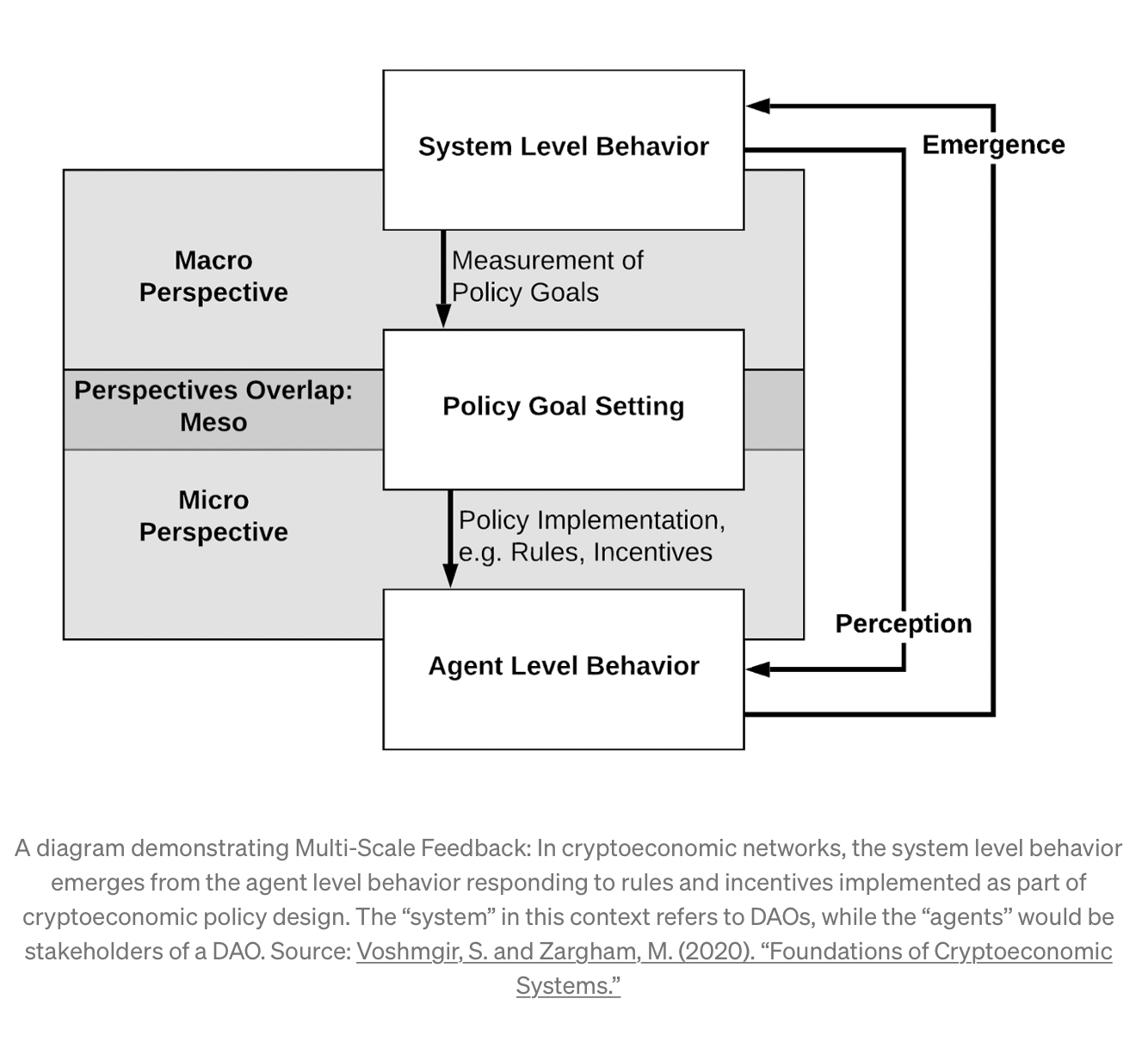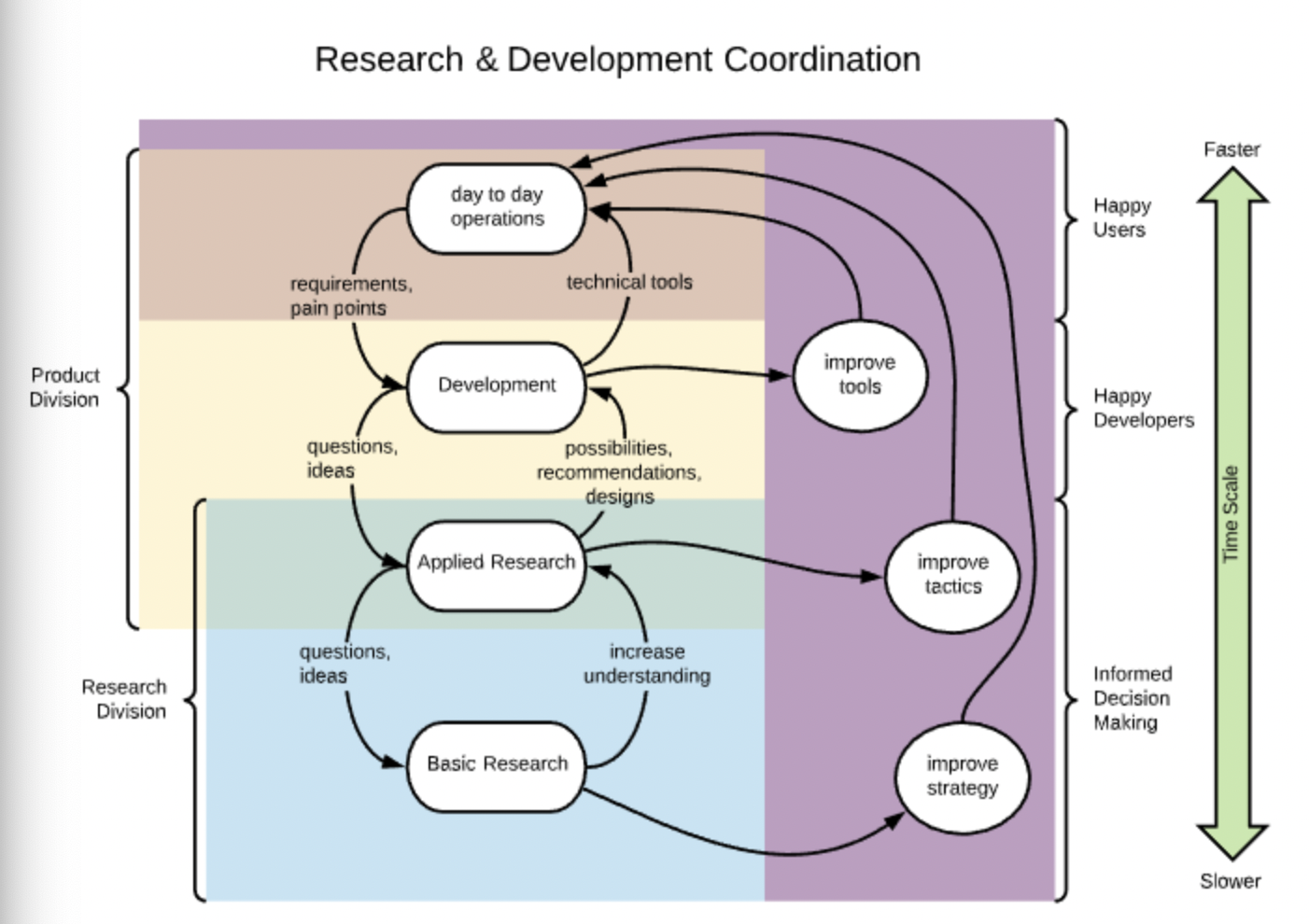Notes on DAO2DAO Relations + Collaboration
by: Kristen Pavle
From Discord (meta, context): Dave and I did a deep dive into this DAO research - it's mostly focused on DAO2DAO relations, and largely uses the perspective/lens of International Relations, with DAOs being new "non-state actors" that have tendencies more like states/governments than like markets/firms
These two briefs are essentially policy reports based on research, analysis, and collaboration with working DAOs (PrimeDAO in particular, a defi entity). While the PrimeDAO background is largely financial, they're very focused on different relational/governance aspects of collaboration - it's RAD...
..And very policy-forward, so may be hard to grok if this is new to you. For me, I was in hog heaven, this is the kind of work I used to do in the healthcare space so it felt very familiar!
Article Links
- Part I: "Conceptual Models for DAO2DAO Relations"
- Part II: "Exploring DAO2DAO Collaboration Mechanisms"
both articles written by Block Science, with PrimeDAO, and Curve Labs
Notes below are essentially a summary of what we were reading - we haven't gone through to work the content through a Buzzard-specific perspective.. more on that to come! Notes are kinda rough but may be a quick way to download to yer brain what's covered in the articles.
Part I: "Conceptual Models for DAO2DAO Relations"
January 13, 2021
DAO Concept & History
- interDAO relations vs intra
- autonomy and decentralization - key words/concepts
- autonomy vs autonomous - in web3 its both, which is pretty cool - autonomy part is the self-actualized organization (poltical philosophy perspective) and the autonomous part is the component parts like smart contracts (control/technological theory perspective)
- virtuous cycle of the autonomous (machine inteligences) informing the autonomy (human inteligences) - DG note
- autonomy vs autonomous - in web3 its both, which is pretty cool - autonomy part is the self-actualized organization (poltical philosophy perspective) and the autonomous part is the component parts like smart contracts (control/technological theory perspective)
- "cyberphysical systems (CPS)...aggregates of automated components overseen by humans but exhibit autonomy asinstitutions well as an emergent collective intelligence"
conceptual models to understand DAOs

interscale models for institutions
- critical to understanding emergeny potential of complex systems
- interscale interactions patterns both within (intra) and between (inter) DAOs:
- Agent to Agent (A2A)
- Agent to Institution (A2I)
- Institution to Agent (I2A)
- Institution to Institution (I2I) - focus of research
- A2A and A2I influence
Quantifying the qualitative phenomenom of DAOs
- (i) transaction costs (low to high)
- extent to impediments to activities of a stakeholder in a DAO
- friction of transaction costs
- costs attention to make decisions
- requires [[pareto-optimal model]] of attention
- also includes cost of automation, co-steering, financial fees, other costs of coordination
- (ii) information availability (low to high)
- private to public spectrum
- blockchain: high content info transparency and low identity info transparency
- information overflow vs obfuscation of data - exteremes to take into account
- (iii) sovereignty (prioritizing agents to prioritizing institutions)
- rules of institution favor individual priorities over group outcomes
- power balance: agent and org
- not same as democracy - which is the feedback loop from agent to organization
- (iv) trust level (competitive to cooperative)
- norms of the institution favor individual agents OR group priorities
- crypto-anarachist - individual self-interest that will ultimately benefit the whole system
- socialist which is behaviorally more collaborative and trusting
- (v) rigidity (adaptive to immutable)
- flexibility to react and adapt to occurences within the system that may require a change to system rules
- reflects level of active democracy - the strength of the feedback loop of how much an individual agent can shape the co-steering of the system
- strong A2I feedback loop (vs strong I2A - common in most orgs)

- conceptual framework lacks the important attribute of power structures within and between DAOs
- relational, so aren't well modeled as a spectrum
- future research
Framing DAOs in the context of Internal Relations
Intro to [[international relations]] (IR)
- normative perspectives - how the world should be
- non-normative - how the world is
- positivist theories - objectifiable questions of measuring/describing
- post-positivist - qualifying questions to define various perspects on concepts, such as power
- more multi-perspectival
- “Diplomatic relations,” “Sovereignty” of Nation States, “National Interest,” “Power, Power Blocks and Polarity,” “Globalization,” ”Interdependence,” “Nationalism,” “Economic Development,” “Sustainability,” “International security,” “Non-state actors,” and many more.
- IR theory: https://en.wikipedia.org/wiki/International_relations_theory#Post-structuralism
- realism - a reaction against interwar idealist thinking; e.g. WWII outbreak is evidence of deficienies of idealist thinking
- statism - nation states are the main actors in international politics (vs. liberals who accomdateroles for non-state actors)
- survival - international sys governed anarchy - no central authority
- self-help - no other state relied up to guarantee states survival
- neorealism - structural realism - modern realism - effect of structure influences state behavior - e.g. to structure above states to enforce rules/maintenance = constant global anarachy = need weapons to protect to guarantee survival
- liberalism
- constructivism
- marxism
- functionalism
- post-structuralism
- post-moderism
- post-colonialism
- feminism
- evoltuionary perspectives
- psychological approaches
- etc
- realism - a reaction against interwar idealist thinking; e.g. WWII outbreak is evidence of deficienies of idealist thinking
Relevant IR Research Questions in the Context DAOs
- D2D and D2 -state and -other non-state actors
- DAO "foreign relations" with other DAOs
- form external relationships and enforce interests
- interdependencies - extension of globalization
- also blockchain network with another subnetwork
- power of nation states
- hard and soft power - coercive power/armed force vs economics, diplomacy or cultural influence
- polarity
- unipolarity - one actor has most influence
- bipolarity - two dominant states
- multipolarity - more than 2 actors have equal power
- nonpolarity = vary centers of power, non of which dominate any other (KP like this one 🙃)
- Power blocks
- combining forces for political, military or economic purposes
- sovereignty
- digital world - assets and data
- interdependent with rules and regs of nation states
- IRL - geography
- digital world - assets and data
Part II: "Exploring DAO2DAO Collaboration Mechanisms"
March 15, 2021 Article link
High leverage [[D2D]] - joint ventures and the co-funding of research
(1) the Proposal Inverter (co-funding research)
(2) the Conditional Tokens Framework. (joint ventures)
Recap of Research Cycle 1
- DAOs = non-state actor in International Relations framework
- DAOs: more resemblance to nation state and markets than firms (aka corporations)
- why? are not embedded within larger higher-level institution that enforces interaction patterns
- kp note - no higher-level institution but there is a higher level ecosystem that is emerging and consolidating the power emerging through DAOs into something more powerful than existing firms or states - because it's emergent
- DAOs = Networked Islands
- novel parallel financial systems

-
beware of [[free-rider]] in [[R&D]] cycles
-
crypto-institutional design !!!! - and "intellectual legitimacy" [[Samo Burja]]
Summary Conceptual Models for D2D Relations
- 5 attributes of DAOs
- (i) transaction costs,
- (ii) information availability,
- (iii) sovereignty,
- (iv) trust level, and
- (v) rigidity
- lacking attribute of power structures
- relational so not well modeled as a spectrum (better represented as "directed graph formalism", later publication will cover 🧐)
D2D: Towards Decentralized Negotiation Protocols
- coordination mechanisms between DAOs
- (i) strategic communication,
- (ii) co-funding of research,
- (iii) co-funding of development,
- (iv) any other type of joint venture,
- (v) a common monetary policy,
- (vi) polycentric governance/policy design
- Gnosis' [[Conditional Tokens Framework]] (CTF)
- adaptable for complex D2D collabs, joint ventures
- [[oracles]] in crypto?? predictive mechanisms?
Recurring Systems Patterns & Mechanism Design
- table in article for types of D2D ventures: joint, community swap (token swap), funding public goods, DAO-merger
- table in article for mechanisms and use cases for D2D
co-funding of research: "so far the tooling we see in the DAO landscape focuses more on the KPI-based approach suited to developers scoping the construction of a pre-specified prototype." - placing undue burden on researchers bc of inherently unknown nature of research process -
**proposal inverter **
- funding primitive to enable multiple groups or individuals to collab on common proposals
- facilitate cross-DAO initiatives such as
- to reduce admin overhead of research
- payment mechanism - "decentralized HR" across DAOs - payment, pre-negotiated contracts
- [[bonding curve]]
- shared benefits to multiple groups
- different stacked primitives
- level 1 - basic "flow wallets"
- release all funds, all at once, according to a static allocation policy
- level 2 - rate-limited "flow wallets"
- leaky integrator - rate-limits the outflow of water, variable outflow
- new water ($) can flow in
- level 3 - rate-limited dynamic allcoation "flow wallets"
- dynamic allocaiton policy - bonding curve, managing access rights to a portion of the monthly funds allocaiton
- easy to take in money from other external agents who want to delegate tokens to signal support
- potential for supporters to see some financial benefit that's received as a direct result of the output generated
- level 1 - basic "flow wallets"
- supporting community management, and care work - mission critical tasks that are hard to quantify, at least in advance - BUT HOW?
- shared research, community processes, infrastructure, and contributor base
- collective liquidity - common pool for funding
- instituional tools for social benefit, public goods - research, education, and community building
[[Conditional Tokens Framework]] CTF
- "treasury" smart contract prototype
- co-fund a joint venture
- trading of ERC-20 tokens based on future events via tokenized escrow outcomes
- shallow conditions - binary or scalar outcomes
- deeper combinatorial conditions - reliant on the outcome of several condition
- based on potential future actions of 2+ DAOs
- collateral backed conditions (held in escrow)
- two phases
- negotiation - proposal
- agreement - vote on the proposal
- tokenized decision tree - tokens for each possible outcome put up in collateral
- if yes and yes - joint venture wallet formed -pros
- more flexibility in structuring and engaging in negotiations than trad escrow
- not on chain unless executed = less gas, and less chain bloat bc mutable multiuse contracts
- value in the conditional tokens themselves
- cons
- complex codebase
- lack of composability of ERC-1155 token standard - req for CTs - relates to core treasury functionality too
- next steps
- shared treasury functionality (central bank? lol)
- accessible by both DAOs and multisig wallets
- mitigate the CTF being an ERC1155 token
- web interface to build proposals on a shared standard (similar to Boardroom)
- structure conditions in a way that is far more programmtic than natural language
- shared treasury functionality (central bank? lol)